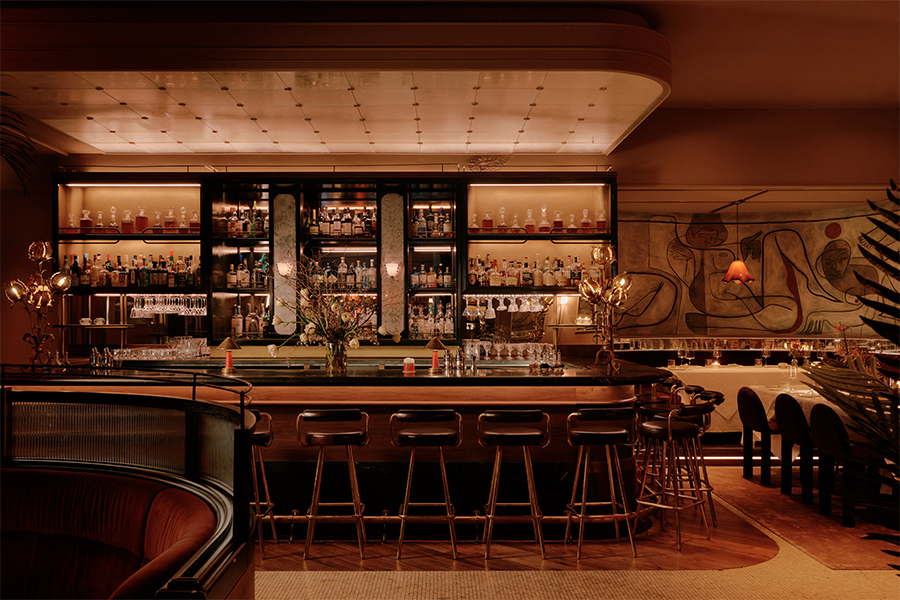“When you say those two ingredients, you think of the region where I grew up,” says Laurent Halasz, founder and designer of Fig & Olive restaurants. “Together they are sweet, salty, and warm.” For the design of his newest location in Newport Beach, California, Halasz recalled his origins on the French Riviera.
Born in Mougins, France, Halasz took to his restaurants his love for his home. “There’s something unique about the Cote d’Azur,” he says. “The light is absolutely wonderful in the summer and it feels like magic during the winter.” Lit by overhead skylights and floor-to-ceiling windows, the 12,000-square-foot restaurant houses six rooms-each echoing different elements of the region. “The goal was to be able to go from room to room and have a different type of experience without the feeling of being in a massive restaurant,” Halasz adds.

Encircling the building, 43 olive trees welcome diners into the lounge area. “When you enter, the design gives an impression of grace, yet informality,” says Halasz. “The first impression is that of elegance, but it’s not meant to feel formal.” The lounge’s high ceilings, large paintings, and white linen sofas blend into the next area-the marble island bar and the wine room.

The iron shelves featuring the bar’s collection of spirits create the restaurant’s focal point. “The bar is very vibrant and you can see everyone,” Halasz notes of the 30-seat area. “It’s a great vibe and you see the preparation of the small bites, which is very typical of the south of France.” The bar’s uninterrupted connection to the Garden Lounge links the outdoors to the interior design with a retractable roof and open patio centered on a rustic fireplace. “The way I grew up in France, you leave the inside and the outside at the same time,” he says.

Similarly, olive trees and framed dried rosemary herbs adorn the Orchard Room. “It’s like you’re dining from under an olive tree,” Halasz explains. “Again, you almost feel like you’re outside when you’re inside.” Hanging rattan lamps and orange linen banquettes circle the room, part of a Mediterranean-influenced color palette. The kitchen, sheltered by shelves of olive oil bottles, can also be seen across most of the dining space. “I grew up with a mother who loved ingredients and cooked the very clean cuisine that we have at Fig & Olive,” says Halasz. “Seeing the ingredients is important.”

Planters of rosemary line the White Room-the restaurant’s most formal space-continuing the emphasis on ingredients. “The Cote d’Azur is modern, chic, and elegant and has a lot of white,” Halasz explains. “The White Room has its own personality. Inside, you’re in your own environment.” Large windows and skylights illuminate the limestone stucco walls, which mimic the sun-soaked homes on the French Riviera.
.jpg)
This same aesthetic informs the design of all of Halasz’ restaurants. “Fig & Olive is more a spirit and an image of a brand, like Chanel,” says Halasz. “When there is a concept of a brand and spirit that is strong, it will appeal to customers all over the world.”



